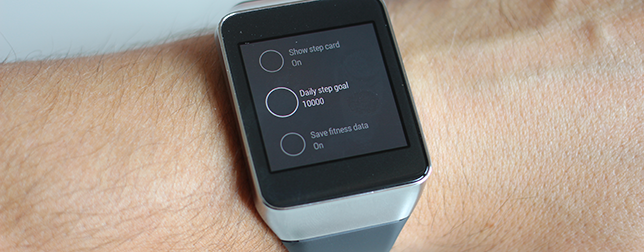Samsung has applied for a patent for a novel smartwatch technology that would turn a wearer’s hand or forearm into a virtual touchscreen. A larger screen makes it easier to input commands on a small device.
Samsung likes to stay ahead of the trends. The company wants to solve the current problem of smartwatches – a small face. A small face makes it harder for the user to read and use the touchscreen to dial a number or text someone. Their solution is to project a larger screen on the hand or forearm.
Read more Upcoming Samsung Smartwatch May Be Powered by Google’s Wear OS
Samsung’s patent also shows the same technology being used with AR or VR headsets, which could project images onto surrounding surfaces, like a wall.
The novel idea, which is a sketch at the moment, shows sketches of a smartwatch projecting a dial pad, menu options, notifications, and even a writing surface onto the back of a person’s hand and forearm. The sketch also shows a wearer interacting with these interfaces outside the smartwatch.
The wearer can activate the technology through the menu on the smartwatch. It will then provide image options that will allow the users to project what’s on the screen to their forearm or on the back of their hand. This will give the user advantage of using a smartwatch dial where they can access a larger space to write and interact with a simple click of a button.
Read more Is it Time for the Smartwatches to Start Listening Carefully?
While this is only a patent – and no one has stated with certainty that Samsung is developing this technology – it’s nice to think we could soon be getting more functionality out of the tiny screens in our smartwatches. Hopefully other tech companies will follow suit addressing the frustrating issue with small smartwatch faces.
On a related note, it was reported in 2016 that the researchers at Carnegie Mellon have discovered a way to turn your skin into a touchpad for wearables like smartwatches. The technology called SkinTrack uses four pairs of electrodes embedded in the watchband, while a ring on the finger produces an electrical signal when the arm is touched. That signal is used by the electrodes to track finger movements, and that in turn turns your arm or hand into a touchpad. A larger touchpad makes it easier to input commands on a small device.













